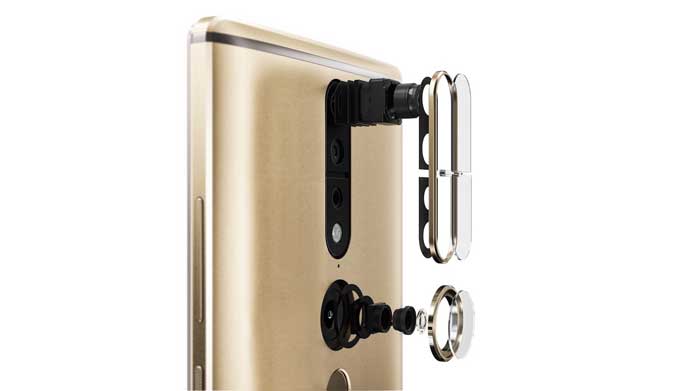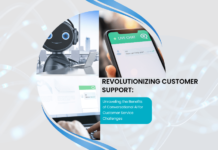A Beast From Lenovo with Google Project Tango – Lenovo Phab 2 Pro
Lenovo Phab 2 Pro – A Phone That Knows how to explore the room.
Lenovo smartphone unveiled Thursday will be clever enough to grasp your physical surroundings — such as the room’s size and the presence of other people — and potentially transform how we interact with e-commerce, education, and gaming.
Today’s smartphones track location through GPS and cell towers, but that does little more than tell apps where you are. Tapping Google’s 3-year- old Project Tango, the new phone will use software and sensors to track motions and map building interiors, including the location of doors and windows.
The Phab2 and Phab 2 Plus are updates of last year’s Phab model and feature oversized 6.4-inch displays, metal construction, and low prices. But the most interesting member of the range is the Phab 2 Pro, which is the first consumer device with Google’s Tango augmented reality technology.
The Phab 2 Pro is like the other Phab 2 models in that it has a very large 6.4-inch display and similar physical design. The Pro’s screen is quad HD and the phone is powered by Qualcomm’s Snapdragon 652 processor (as opposed to the MediaTek chips in the Phab 2 and Phab 2 Plus). It has a 16-megapixel camera, 4GB of RAM, a fingerprint scanner, 4,000mAh battery, and all of the other features you’d expect on a modern Android smartphone.
That’s a crucial step in the promising new frontier in “augmented reality,” or the digital projection of lifelike images and data into a real-life environment.
Lenovo says the new Phab2 Pro phone will sell for $500 when it begins shipping in the U.S. in August. The device is expected to be on store shelves by mid-September, in advance of Apple’s anticipated release of the iPhone 7.

But what sets the Phab 2 Pro apart is the Tango technology, which adds a wide-angle camera and special depth-sensing unit to the main 16-megapixel shooter. It’s a shrunken down and improved version of the Tango camera array that’s been available to developers on a tablet device for a couple of years, but it largely functions the same way.
The Phab2 Pro also looks impressive, with a 6.4-inch display screen and four cameras to help perform its wizardry.
Using the Tango features, the Phab 2 Pro can map out a physical space, track objects, and project virtual effects in a real-world space. Lenovo is demonstrating the technology with a variety of apps, including virtual reality-style shooting games; an educational app, made in partnership with the American Museum of Natural History; and a domino app that lets you set up Rube Goldberg-like contraptions with virtual pieces. Prior Tango demos have shown how it can be used to navigate an indoor space or provide contextual information based on the object it is looking at.
If Tango fulfills its promise, furniture shoppers will be able to download digital models of couches, chairs and coffee tables to see how they would look in their actual living rooms. Kids studying the Mesozoic Era would be able to place a virtual Tyrannosaurus or Velociraptor in their home or classroom — and even take selfies with one. The technology would even know when to display information about an artist or a scene depicted in a painting as you stroll through a museum.

Tango will be able to create internal maps of homes and offices on the fly. Google won’t need to build a mapping database ahead of time, as it does with existing services like Google Maps and Street View. Nonetheless, Tango could raise fresh concerns about privacy if controls aren’t stringent enough to prevent the on-the- fly maps from being shared with unauthorized apps or heisted by hackers.
You’ll be able to get the Phab 2 lineup directly from Lenovo and select retailers in September. The Phab 2 will cost $199 while the Phab 2 Plus will sell for $299 and the Lenovo Phab 2 Pro will retail at $499. We’ll have more on the Lenovo Phab 2 Pro and the rest of the lineup once we have spent some time with final production units.
None of that is necessary with the Lenovo Phab 2 Pro. Instead, you get an augmented look at your surroundings through the phone’s screen.
Despite all the fancy hardware, the key to the Tango phone’s success is likely to hinge on the breadth of compelling apps that people find useful in their everyday lives. If history is any guide, the early apps may be more demonstrative than practical.
Google had previously released experimental Tango devices designed for computer programmers, spurring them to build about 100 apps that should work with the Phab2 Pro.
Both large and small tech companies are betting that augmented reality, or AR, will take off sooner than later. Microsoft has been selling a $3,000 prototype of its HoloLens AR headset. Others, such as Facebook’s Oculus and Samsung, are out with virtual-reality devices. Google has one coming as well through its Daydream project. While AR tries to blend the artificial with your actual surroundings, virtual reality immerses its users in a setting that’s entirely fabricated.
With both, the devices out so far invariably require users to wear a headset or glasses. In many cases, they also must be tethered to more powerful personal computers, restricting the ability to move around.
None of that is necessary with the Lenovo Phab 2 Pro. Instead, you get an augmented look at your surroundings through the phone’s screen.
“This has a chance to become pervasive because it’s integrated into a device that you already have with you all the time,” says Jeff Meredith, a Lenovo vice president who oversaw development of the Tango device. “You aren’t going to have to walk around a mall wearing a headset.”
Google plans to bring Tango to other phones but is focusing on the Lenovo partnership this year, according to Johnny Lee, a Google executive who oversaw the team that developed the technology drawn from previous research in robotics and the U.S. space program.

















































